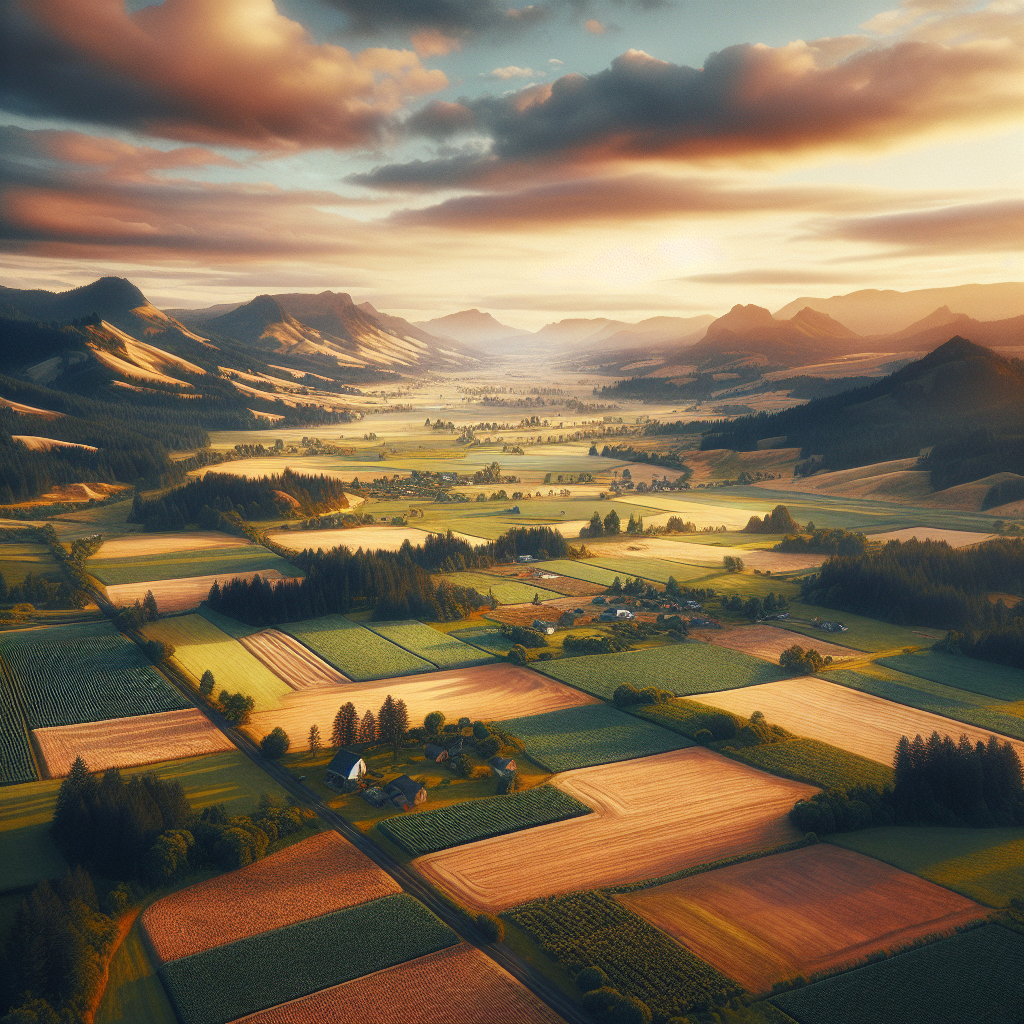Oregon’s Green Initiative: The Rise of Regenerative Farming
Here in Oregon, we’re a lot more than just Crater Lake deep and Bald Peak high. We’re a kaleidoscope of people who are deeply connected to the land, with an unending love for our moss-covered forests, the wild and brazen Rogue River, and of course, our earth-friendly philosophies. One such treasured practice you’d be seeing more of around these parts is regenerative farming.
Laying Down The Roots
If you drive towards the heartland – the Willamette Valley – you’ll come across acres of fertile farmland that seem to stretch endlessly. Generations of farmers have worked these lands, from the folks growing some of the finest Pinot Noir grapes in Dundee Hills to the hazelnut orchards of Donald. But among these traditional farms, a new trend is blossoming. It’s something we call regenerative farming. Instead of just taking from the land, these farmers aim to give back, ensuring Mother Nature stays just as hearty today as in their grandparents’ days. It’s an embrace of the big picture where we prioritize our beaver state’s well-being over instant yield.
The Abeja Farm in Clackamas County is one such place where you can see this change upfront. Not your ordinary farm, this place reflects a resilient, regenerative agriculture system. The farmers here don’t just produce one crop and deplete the land. Instead, they rear bees, cultivate a rich variety of vegetables, and better yet, they manage their farm in a way that enriches the ecosystem, taking our state-backed motto “She Flies with Her Own Wings” literally.

Going Beyond Organic
If there’s one thing we Oregonians love more than cheering our Ducks during a football season, it’s taking pride in our organic, locally-sourced foods. However, regenerative farming takes it a notch higher. It’s not just about avoiding harmful pesticides or synthetic fertilizers, although the team at SunGold Farm at Forest Grove will affirm that’s an essential part of it. More than sustainable, it’s restorative. This type of farming not only reduces carbon footprint but also increases biodiversity and replenishes the soil’s health. Think of it as Mount Hood returning to its snowy splendor after a long, dry summer.
Not Just A Trend, But A Tradition
Traditionally, regenerative farming practices were common among indigenous tribes of Oregon. The Confederated Tribes of the Grand Ronde, for example, practiced a form of this agricultural method known as ‘camas management’. Carefully orchestrated burning practices encouraged the growth of camas, a native edible plant. This ancient wisdom that nurtured the land while respecting its nature is what today’s regenerative farmers aim to carry forward.
To us, embracing this isn’t just a trend; instead, it’s another way to savor our state’s bounty, much like a leisurely treasure hunting trip to our beloved Powell’s Books in Portland or spending a day collecting agates on Newport’s beaches.
A Harvest Worth Waiting For
Like our famous Tillamook cheese, regenerative farming is also a process worth waiting for. It takes time to heal the land, replenish the soil, and create a holistic ecosystem. But once there, the rewards are far beyond what you see at the farmer’s market. They provide a sense of connection, like standing on the brink of Haystack Rock at Cannon Beach or sipping a microbrew on a cool Portland evening.
The John’s Farm in Cove, Union County, where one can witness Oregon’s changing seasons in all their glory, is a fine example of this fruitful patience. These folks have been transforming their farmland through regenerative practices, one season at a time. And based on their vibrant vegetables that would outshine any rhododendron at the Rhododendron Festival in Florence, it’s no wonder the practice is catching on.
Seed The Future
We’ve all had our share of weather talk here in Oregon, from our notorious, drizzly days to that rare and treasured sunshine that graces the state fair in Salem. But regenerative farming is an investment that can weather any storm, literally and figuratively. This is our canvas for painting a picture-perfect future where our lands remain fertile and robust, just like our old-growth Douglas firs.
So the next time you enjoy a pint of Rogue Ale or dive into a plate of your favorite Willamette Valley wine grapes, remember the hands and lands that cultivated these treats. Regenerative farms are nurturing our great state, from the Pacific coastline to the Cascade Range, one seed at a time.
And who knows, maybe in the future, our regenerative farming practices can become as iconic as Crater Lake or as beloved as Voodoo Doughnuts. So, let’s continue to plant, grow, and thrive. After all, isn’t that the Oregon way?
